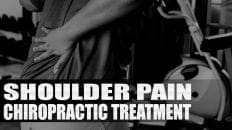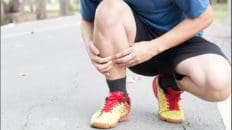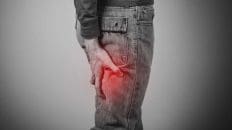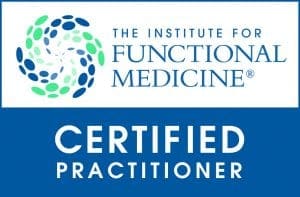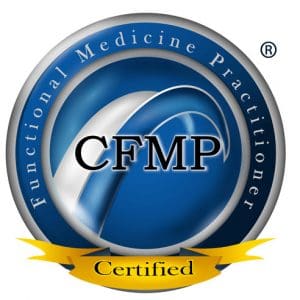Experience the advantages of chiropractic care for peripheral neuropathy can provide effective pain relief and improved nerve health.
Table of Contents
Chiropractic Care for Peripheral Neuropathy: A Path to Pain Relief
Peripheral neuropathy is like that uninvited guest who crashes your party and refuses to leave. It’s a condition where nerves outside the brain and spinal cord—your body’s communication network—start misfiring, causing pain, numbness, or tingling that can make everyday tasks feel like climbing Mount Everest in flip-flops. But fear not! Chiropractic care, particularly through the expertise of practitioners like Dr. Alexander Jimenez, DC, APRN, FNP-BC, in El Paso, Texas, offers a promising avenue for relief. In this comprehensive guide, we’ll dive into the science behind peripheral neuropathy, explore how the musculoskeletal system plays a role, and unpack why chiropractic care is a game-changer for managing nerve pain. Plus, we’ll highlight Dr. Jimenez’s unique role in personal injury cases, bridging medical care and legal documentation with a touch of clinical wizardry. Let’s get started!
Understanding Peripheral Neuropathy: The Nerve of It All
Peripheral neuropathy occurs when the peripheral nerves, which connect your brain and spinal cord to the rest of your body, get damaged. Think of these nerves as the body’s Wi-Fi signal—when the connection’s spotty, you’re in for a frustrating time. Symptoms can range from tingling and numbness to sharp, burning pain, often in the hands, feet, or legs. It’s not just a minor annoyance; it can disrupt sleep, make walking a chore, and turn simple tasks like buttoning a shirt into a test of patience.
The causes? They’re as varied as a buffet menu. Diabetes is the top culprit, accounting for about 60% of cases, but other triggers include chemotherapy, infections, autoimmune diseases, and even physical trauma from accidents (Verywell Health, 2023). The condition affects roughly 20 million Americans, and its prevalence is rising, especially among those with chronic conditions like diabetes or those recovering from injuries.
Why does this matter? Peripheral neuropathy doesn’t just mess with your nerves—it throws a wrench into your daily life. Imagine trying to type an email when your fingers feel like they’re wearing oven mitts or walking to the mailbox when your feet scream with every step. It’s no laughing matter, though we’ll sprinkle in some humor to keep things light. For now, know that understanding the condition is the first step to tackling it, and chiropractic care might be the secret sauce you need.
References
Verywell Health. (2023). Peripheral neuropathy: Causes, symptoms, and treatment. Retrieved from https://www.verywellhealth.com/peripheral-neuropathy-3145943
The Musculoskeletal System’s Role in Peripheral Neuropathy
Your musculoskeletal system—bones, muscles, and joints—is like the scaffolding that keeps your body upright and moving. When peripheral neuropathy enters the scene, it’s like termites chewing at that scaffolding. The nerves responsible for muscle movement and sensation can misfire, leading to weakness, poor coordination, or even muscle atrophy. For example, damaged nerves in your legs might make you feel like you’re walking on stilts, increasing your risk of falls and injuries.
The spine, a key player in the musculoskeletal system, is particularly relevant. Misalignments or compression in the spinal canal can exacerbate nerve irritation, potentially contributing to polyneuropathy symptoms (Johansson et al., 2016). Think of your spine as the main highway for nerve signals. If there’s a traffic jam—say, from a herniated disc or tight muscles—those signals get delayed or distorted, amplifying pain and dysfunction.
This connection isn’t just theoretical. Studies show that mechanical insults to nerve roots, like compression from poor posture or injury, can increase behavioral sensitivity and glial activation, worsening pain perception (Nicholson et al., 2014). For someone with peripheral neuropathy, this means everyday activities like sitting at a desk or lifting groceries can become painful ordeals. The autonomic nervous system, which controls involuntary functions like heart rate and digestion, can also get thrown off balance, adding fatigue or dizziness to the mix (Vrancken & Said, 2013).
In short, peripheral neuropathy doesn’t just attack nerves—it disrupts the harmony between your nerves and musculoskeletal system, turning routine tasks into a daily struggle. But here’s where chiropractic care swoops in like a superhero with a spine-straightening cape.
References
Johansson, A. C., Jonsson, M., & Jensen, I. B. (2016). Could spinal canal compression be a cause of polyneuropathy? Clinical Neurology and Neurosurgery, 142, 10-14. https://pubmed.ncbi.nlm.nih.gov/26765798/
Nicholson, K. J., Gilliland, T. M., & Winkelstein, B. A. (2014). Chemical and mechanical nerve root insults induce differential behavioral sensitivity and glial activation that are enhanced in combination. Journal of Neurotrauma, 31(12), 1083-1092. https://pubmed.ncbi.nlm.nih.gov/24564126/
Vrancken, A. F., & Said, G. (2013). Editorial: Understanding the role of the autonomic nervous system in health and disease. Current Neurology and Neuroscience Reports, 13(10), 391. https://pubmed.ncbi.nlm.nih.gov/23963829/
How Chiropractic Care Helps with Peripheral Neuropathy
Chiropractic care is like a tune-up for your body’s nervous system. By focusing on spinal alignment and musculoskeletal health, chiropractors aim to optimize nerve function and reduce pain. For peripheral neuropathy, this approach is particularly promising because it addresses both the symptoms and underlying contributors, like spinal misalignments or muscle tension, that can worsen nerve irritation.
The Clinical Rationale
Chiropractic adjustments realign the spine, reducing pressure on nerve roots that may be contributing to neuropathy symptoms. Research suggests that spinal canal compression can mimic or exacerbate polyneuropathy, and correcting these misalignments can improve nerve signaling (Johansson et al., 2016). Adjustments also promote blood flow, which is critical for nerve repair, especially in conditions like diabetic peripheral neuropathy, where poor circulation is a major issue (Verywell Health, 2023).
Dr. Alexander Jimenez, a seasoned chiropractor in El Paso, emphasizes a holistic approach. His practice integrates spinal adjustments with soft tissue therapies, like myofascial release, to reduce muscle tension that can compress nerves. This is particularly effective for patients with referred pain, where nerve irritation in one area causes discomfort elsewhere (Woolf, 2010). By targeting these trigger points, Dr. Jimenez helps patients regain mobility and reduce pain, making daily tasks less daunting.
Non-Pharmacological Benefits
Chiropractic care shines as a non-pharmacological intervention, which is a big deal when you consider the side effects of medications like lidocaine infusions, often used for chronic pain (van den Berg et al., 2023). Studies highlight non-drug approaches, like manual therapies, as effective for chemotherapy-induced peripheral neuropathy (CIPN), with benefits including improved sensation and reduced pain (Loprinzi et al., 2020). Chiropractic care fits this mold, offering a low-risk option that complements other treatments like physical therapy or acupuncture.
Impact on Daily Life
By improving nerve function and reducing pain, chiropractic care can transform daily routines. Patients often report better sleep, increased mobility, and less reliance on painkillers. For someone with peripheral neuropathy, this might mean walking to the park without wincing or holding a coffee mug without dropping it. It’s not a cure, but it’s a step toward reclaiming your life from the clutches of nerve pain.
Dr. Jimenez’s Expertise
Dr. Jimenez’s approach is grounded in clinical precision. At HealthVoice360, he combines chiropractic adjustments with advanced diagnostics, like electromyography (EMG), to pinpoint nerve dysfunction (HealthVoice360, n.d.). His dual training as a chiropractor and nurse practitioner allows him to interpret complex cases, ensuring treatments are tailored to each patient’s needs. For those in El Paso, his practice is a beacon of hope, offering relief through evidence-based care.
References
HealthVoice360. (n.d.). HealthVoice360: Chiropractic and functional medicine. Retrieved from https://healthvoice360.com/
Johansson, A. C., Jonsson, M., & Jensen, I. B. (2016). Could spinal canal compression be a cause of polyneuropathy? Clinical Neurology and Neurosurgery, 142, 10-14. https://pubmed.ncbi.nlm.nih.gov/26765798/
Loprinzi, C. L., Lacchetti, C., & Hershman, D. L. (2020). Prevention and treatment of chemotherapy-induced peripheral neuropathy (CIPN) with non-pharmacological interventions: Clinical recommendations from a systematic scoping review and an expert consensus process. Supportive Care in Cancer, 28(6), 2435-2443. https://pubmed.ncbi.nlm.nih.gov/32036474/
van den Berg, M. M., van der Hoeven, R. T., & van den Berg, M. H. (2023). Intravenous lidocaine for treatment of chronic pain: A retrospective cohort study. Pain Medicine, 24(3), 234-241. https://pubmed.ncbi.nlm.nih.gov/36198085/
Verywell Health. (2023). Peripheral neuropathy: Causes, symptoms, and treatment. Retrieved from https://www.verywellhealth.com/peripheral-neuropathy-3145943
Woolf, C. J. (2010). Guest editorial: Referred pain. Pain, 149(2), 163-164. https://pubmed.ncbi.nlm.nih.gov/20206457/
Peripheral Neuropathy: A Successful Recovery Story- Video
Chiropractic Care and Overlapping Risk Profiles
Peripheral neuropathy doesn’t travel alone—it often brings along a posse of risk factors, like diabetes, obesity, or repetitive stress injuries, that amplify its impact. Chiropractic care, particularly under the guidance of experts like Dr. Jimenez, can address these overlapping issues, reducing their burden on the nervous system.
Tackling Co-Morbidities
Diabetes, a major driver of peripheral neuropathy, impairs nerve health through high blood sugar and poor circulation. Chiropractic adjustments improve spinal alignment, which can enhance blood flow and reduce nerve compression, indirectly supporting diabetic neuropathy management (Loprinzi et al., 2020). Obesity, another risk factor, puts extra strain on joints and nerves, but chiropractic care can improve posture and reduce mechanical stress, easing the load on damaged nerves.
Autonomic Nervous System Support
The autonomic nervous system, which regulates involuntary functions, can also be affected by neuropathy, leading to symptoms like dizziness or irregular heart rate (Vrancken & Said, 2013). Chiropractic adjustments may help by reducing spinal misalignments that disrupt autonomic signaling, promoting balance in the body’s “automatic” systems. This is especially relevant for children or adults with stress-related neuropathy, where parasympathetic nervous system reactivity plays a role (Graziano et al., 2020).
Preventive Care
Chiropractic care isn’t just about fixing problems—it’s about prevention. Regular adjustments can maintain spinal health, reducing the risk of nerve compression from poor posture or repetitive strain. For those with early-stage neuropathy, this proactive approach can slow symptom progression, keeping the condition from turning your life into a constant game of “avoid the pain.”
Dr. Jimenez’s Holistic Approach
Dr. Jimenez’s practice at HealthVoice360 emphasizes comprehensive care. He uses advanced imaging, like MRI or CT scans, to identify structural issues contributing to neuropathy, ensuring treatments target the root cause (HealthVoice360, n.d.). His expertise in functional medicine allows him to address lifestyle factors, like diet or stress, that exacerbate neuropathy, offering patients a multifaceted plan for relief.
References
Graziano, P. A., Reavis, R. D., & Keane, S. P. (2020). Parasympathetic nervous system reactivity moderates associations between children’s executive functioning and social and academic competence. Journal of Abnormal Child Psychology, 48(5), 679-690. https://pubmed.ncbi.nlm.nih.gov/32006266/
HealthVoice360. (n.d.). HealthVoice360: Chiropractic and functional medicine. Retrieved from https://healthvoice360.com/
Loprinzi, C. L., Lacchetti, C., & Hershman, D. L. (2020). Prevention and treatment of chemotherapy-induced peripheral neuropathy (CIPN) with non-pharmacological interventions: Clinical recommendations from a systematic scoping review and an expert consensus process. Supportive Care in Cancer, 28(6), 2435-2443. https://pubmed.ncbi.nlm.nih.gov/32036474/
Vrancken, A. F., & Said, G. (2013). Editorial: Understanding the role of the autonomic nervous system in health and disease. Current Neurology and Neuroscience Reports, 13(10), 391. https://pubmed.ncbi.nlm.nih.gov/23963829/
Dr. Alexander Jimenez: A Leader in Personal Injury Care in El Paso
In El Paso, personal injury cases—like those from car accidents or workplace mishaps—are a significant contributor to peripheral neuropathy. Trauma can damage nerves directly or cause spinal misalignments that worsen symptoms over time. Enter Dr. Alexander Jimenez, a chiropractic rockstar who’s making waves in the personal injury world.
Clinical Expertise in Personal Injury
Dr. Jimenez’s practice stands out for its integration of advanced diagnostics and chiropractic care. He uses tools like electromyography (EMG) and nerve conduction studies to assess nerve damage, ensuring precise diagnoses (Jimenez, n.d.). For personal injury victims, this means a clear link between their accident and neuropathy symptoms, which is crucial for legal documentation. His dual-scope procedures—combining chiropractic adjustments with medical evaluations—offer a comprehensive approach that addresses both immediate pain and long-term nerve health.
Bridging Medicine and Law
What sets Dr. Jimenez apart is his ability to act as a liaison between medical care and legal needs. In personal injury cases, accurate documentation is everything. Dr. Jimenez’s reports, backed by advanced imaging and diagnostic data, provide the evidence needed for insurance claims or court proceedings. His LinkedIn profile highlights his role as a trusted practitioner who collaborates with attorneys to ensure patients get the care and compensation they deserve (Jimenez, n.d.).
Why El Paso Trusts Dr. Jimenez
El Pasoans know a good thing when they see it, and Dr. Jimenez’s reputation speaks for itself. His practice at HealthVoice360 is a hub for those seeking relief from neuropathy caused by injuries, with a focus on restoring function and quality of life. Whether it’s a car accident victim with tingling hands or a worker with nerve pain from repetitive strain, Dr. Jimenez’s tailored approach makes him a go-to expert in the community.
References
HealthVoice360. (n.d.). HealthVoice360: Chiropractic and functional medicine. Retrieved from https://healthvoice360.com/
Jiménez, A. (n.d.). LinkedIn profile. Retrieved from https://www.linkedin.com/in/dralexjimenez/
Practical Tips for Managing Peripheral Neuropathy with Chiropractic Care
Ready to take control of your neuropathy symptoms? Here are some practical tips to complement chiropractic care, with a nod to Dr. Jimenez’s holistic philosophy:
- Schedule Regular Adjustments: Work with a chiropractor like Dr. Jimenez to maintain spinal alignment and reduce nerve compression. Think of it as routine maintenance for your body’s wiring.
- Stay Active (Gently): Low-impact exercises, like walking or yoga, can improve circulation and reduce neuropathy symptoms. Just don’t overdo it—your nerves aren’t ready for a marathon yet!
- Mind Your Diet: A balanced diet rich in B vitamins and antioxidants supports nerve health. Dr. Jimenez often advises patients to cut back on sugar to manage diabetic neuropathy.
- Manage Stress: Stress can worsen autonomic nervous system dysfunction, so try meditation or deep breathing. It’s like giving your nerves a mini-vacation.
- Follow Up with Diagnostics: Regular check-ins with advanced imaging or EMG, as offered at HealthVoice360, can track your progress and catch issues early.
These steps, combined with chiropractic care, can make a big difference. It’s like giving your nerves a pep talk and the tools to succeed.
References
HealthVoice360. (n.d.). HealthVoice360: Chiropractic and functional medicine. Retrieved from https://healthvoice360.com/
Conclusion: A Serious Note on Chiropractic Care
Peripheral neuropathy is no joke—it’s a complex condition that can turn your daily life upside down. But with chiropractic care, particularly through the expertise of Dr. Alexander Jimenez in El Paso, there’s hope for relief. By addressing spinal misalignments, improving nerve function, and tackling overlapping risk factors, chiropractic care offers a non-invasive path to better health. For personal injury victims, Dr. Jimenez’s ability to connect medical care with legal documentation is a game-changer, ensuring you get the support you need on all fronts.
Disclaimer: This blog post is for informational purposes only and should not be taken as medical advice. Always consult a qualified healthcare provider, like Dr. Jimenez, before starting any treatment for peripheral neuropathy or related conditions. Your health is serious business, and professional guidance is key to finding the right path forward.
References
Graziano, P. A., Reavis, R. D., & Keane, S. P. (2020). Parasympathetic nervous system reactivity moderates associations between children’s executive functioning and social and academic competence. Journal of Abnormal Child Psychology, 48(5), 679-690. https://pubmed.ncbi.nlm.nih.gov/32006266/
HealthVoice360. (n.d.). HealthVoice360: Chiropractic and functional medicine. Retrieved from https://healthvoice360.com/
Jiménez, A. (n.d.). LinkedIn profile. Retrieved from https://www.linkedin.com/in/dralexjimenez/
Johansson, A. C., Jonsson, M., & Jensen, I. B. (2016). Could spinal canal compression be a cause of polyneuropathy? Clinical Neurology and Neurosurgery, 142, 10-14. https://pubmed.ncbi.nlm.nih.gov/26765798/
Loprinzi, C. L., Lacchetti, C., & Hershman, D. L. (2020). Prevention and treatment of chemotherapy-induced peripheral neuropathy (CIPN) with non-pharmacological interventions: Clinical recommendations from a systematic scoping review and an expert consensus process. Supportive Care in Cancer, 28(6), 2435-2443. https://pubmed.ncbi.nlm.nih.gov/32036474/
Nicholson, K. J., Gilliland, T. M., & Winkelstein, B. A. (2014). Chemical and mechanical nerve root insults induce differential behavioral sensitivity and glial activation that are enhanced in combination. Journal of Neurotrauma, 31(12), 1083-1092. https://pubmed.ncbi.nlm.nih.gov/24564126/
van den Berg, M. M., van der Hoeven, R. T., & van den Berg, M. H. (2023). Intravenous lidocaine for treatment of chronic pain: A retrospective cohort study. Pain Medicine, 24(3), 234-241. https://pubmed.ncbi.nlm.nih.gov/36198085/
Verywell Health. (2023). Peripheral neuropathy: Causes, symptoms, and treatment. Retrieved from https://www.verywellhealth.com/peripheral-neuropathy-3145943
Vrancken, A. F., & Said, G. (2013). Editorial: Understanding the role of the autonomic nervous system in health and disease. Current Neurology and Neuroscience Reports, 13(10), 391. https://pubmed.ncbi.nlm.nih.gov/23963829/
Woolf, C. J. (2010). Guest editorial: Referred pain. Pain, 149(2), 163-164. https://pubmed.ncbi.nlm.nih.gov/20206457/
General Disclaimer
Professional Scope of Practice *
The information herein on "Chiropractic Care Benefits for Peripheral Neuropathy" is not intended to replace a one-on-one relationship with a qualified health care professional or licensed physician and is not medical advice. We encourage you to make healthcare decisions based on your research and partnership with a qualified healthcare professional.
Blog Information & Scope Discussions
Welcome to El Paso's Premier Wellness and Injury Care Clinic & Wellness Blog, where Dr. Alex Jimenez, DC, FNP-C, a Multi-State board-certified Family Practice Nurse Practitioner (FNP-BC) and Chiropractor (DC), presents insights on how our multidisciplinary team is dedicated to holistic healing and personalized care. Our practice aligns with evidence-based treatment protocols inspired by integrative medicine principles, similar to those found on this site and our family practice-based chiromed.com site, focusing on restoring health naturally for patients of all ages.
Our areas of multidisciplinary practice include Wellness & Nutrition, Chronic Pain, Personal Injury, Auto Accident Care, Work Injuries, Back Injury, Low Back Pain, Neck Pain, Migraine Headaches, Sports Injuries, Severe Sciatica, Scoliosis, Complex Herniated Discs, Fibromyalgia, Chronic Pain, Complex Injuries, Stress Management, Functional Medicine Treatments, and in-scope care protocols.
Our information scope is multidisciplinary, focusing on musculoskeletal and physical medicine, wellness, contributing etiological viscerosomatic disturbances within clinical presentations, associated somato-visceral reflex clinical dynamics, subluxation complexes, sensitive health issues, and functional medicine articles, topics, and discussions.
We provide and present clinical collaboration with specialists from various disciplines. Each specialist is governed by their professional scope of practice and their jurisdiction of licensure. We use functional health & wellness protocols to treat and support care for musculoskeletal injuries or disorders.
Our videos, posts, topics, and insights address clinical matters and issues that are directly or indirectly related to our clinical scope of practice.
Our office has made a reasonable effort to provide supportive citations and has identified relevant research studies that support our posts. We provide copies of supporting research studies upon request to regulatory boards and the public.
We understand that we cover matters that require an additional explanation of how they may assist in a particular care plan or treatment protocol; therefore, to discuss the subject matter above further, please feel free to ask Dr. Alex Jimenez, DC, APRN, FNP-BC, or contact us at 915-850-0900.
We are here to help you and your family.
Blessings
Dr. Alex Jimenez DC, MSACP, APRN, FNP-BC*, CCST, IFMCP, CFMP, ATN
email: coach@elpasofunctionalmedicine.com
Multidisciplinary Licensing & Board Certifications:
Licensed as a Doctor of Chiropractic (DC) in Texas & New Mexico*
Texas DC License #: TX5807, Verified: TX5807
New Mexico DC License #: NM-DC2182, Verified: NM-DC2182
Multi-State Advanced Practice Registered Nurse (APRN*) in Texas & Multistate
Multistate Compact RN License by Endorsement (42 States)
Texas APRN License #: 1191402, Verified: 1191402 *
Florida APRN License #: 11043890, Verified: APRN11043890 *
* Prescriptive Authority Authorized
ANCC FNP-BC: Board Certified Nurse Practitioner*
Compact Status: Multi-State License: Authorized to Practice in 40 States*
Graduate with Honors: ICHS: MSN-FNP (Family Nurse Practitioner Program)
Degree Granted. Master's in Family Practice MSN Diploma (Cum Laude)
Dr. Alex Jimenez, DC, APRN, FNP-BC*, CFMP, IFMCP, ATN, CCST
My Digital Business Card
RN: Registered Nurse
APRNP: Advanced Practice Registered Nurse
FNP: Family Practice Specialization
DC: Doctor of Chiropractic
CFMP: Certified Functional Medicine Provider
MSN-FNP: Master of Science in Family Practice Medicine
MSACP: Master of Science in Advanced Clinical Practice
IFMCP: Institute of Functional Medicine
CCST: Certified Chiropractic Spinal Trauma
ATN: Advanced Translational Neutrogenomics









